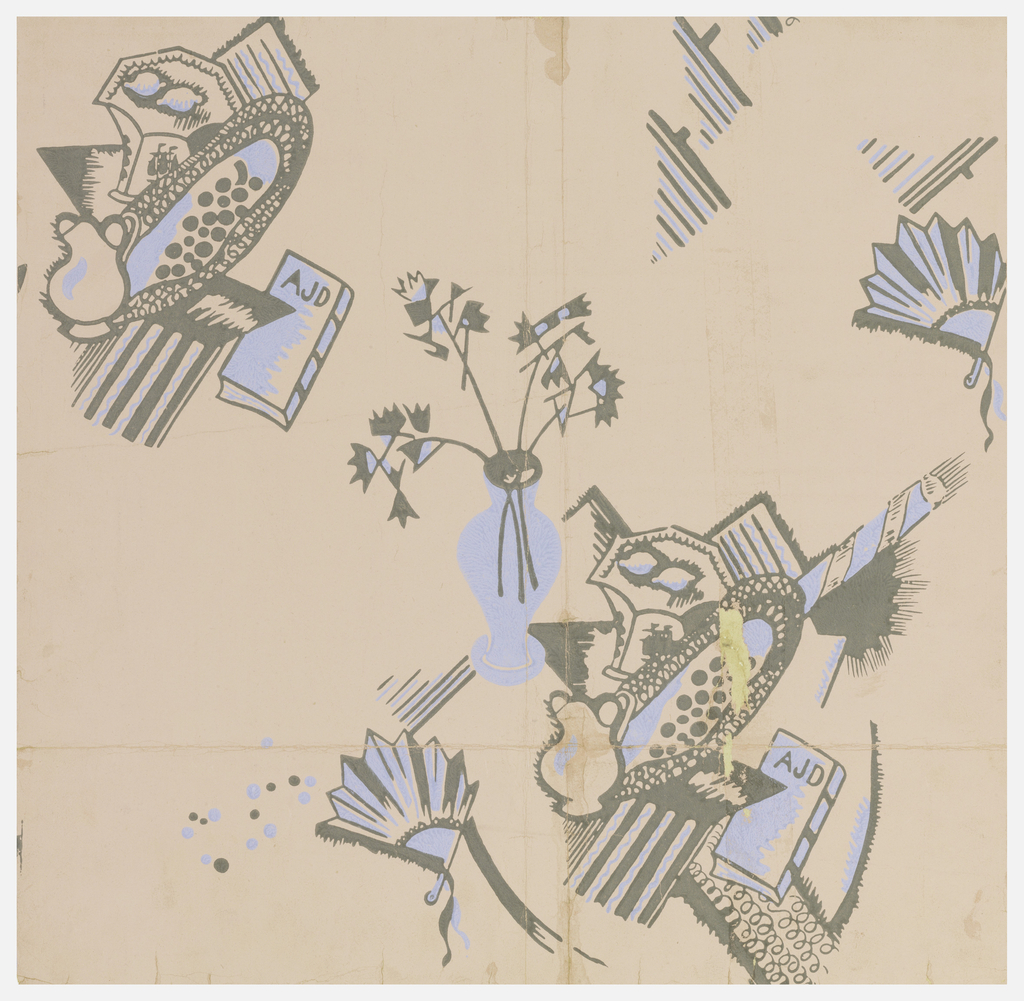Collections of miscellaneous objects in pale blue and gray are grouped in floating clusters on a ballet-pink background. In the lower right-hand corner of the panel, a paper fan floats towards a pile of shapes that I choose to interpret as a pitcher, an upside-down lampshade, a vase of flowers, some lemons, a book with the monogram “AJD” on the back cover (perhaps the designer’s initials?) and mattress springs. Similar, if not identical, groupings of objects are portrayed in the top corners. The objects do not adhere to the classic rules of perspective, and appear at once before, behind and beside each other. Blue and gray bubbles and dashes give a sense of movement, and make it look as though these clusters of bric-a-brac are whizzing through an alternate dimension.
This sidewall likely dates to 1928, and its curious pattern is clearly inspired by Cubism, the influential visual style pioneered by Pablo Picasso and Georges Braque in the first decades of the twentieth century. Cubist works disregarded traditional Western notions of artistic composition, which were developed to allow the artist to imitate nature as precisely as possible. Instead, Cubism broke apart images and rearranged them in two-dimensional planes, playing with perspective in a way that paid no heed to emulating the realities of the three dimensional world. These tenants of Cubism can be recognized in the little jumbles of daily life depicted on this sidewall, which call to mind Picasso’s famous Still Life from 1918 (now at the Washington National Gallery of Art). But, the pastel colors and the hand-drawn appearance of the wallpaper give it a rather pretty, non-intrusive quality, making it a pleasant choice of decor both for those who appreciate the avant garde and those who just want a nice wallpaper.
Anna Rasche is a student in the History of Decorative Arts & Design graduate Program at the Cooper Hewitt, and is a Master’s Fellow in the Wallcoverings Department.
